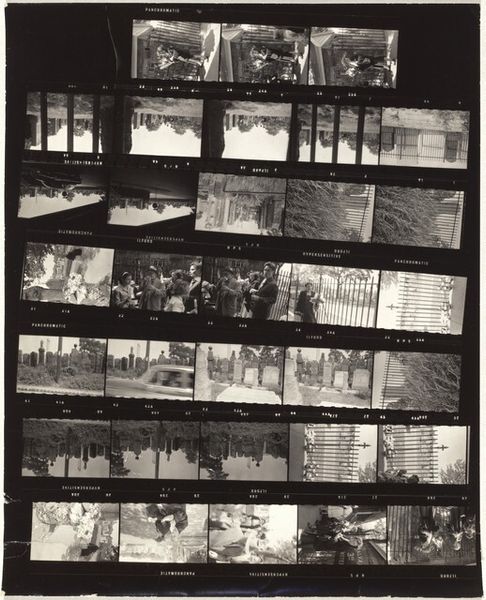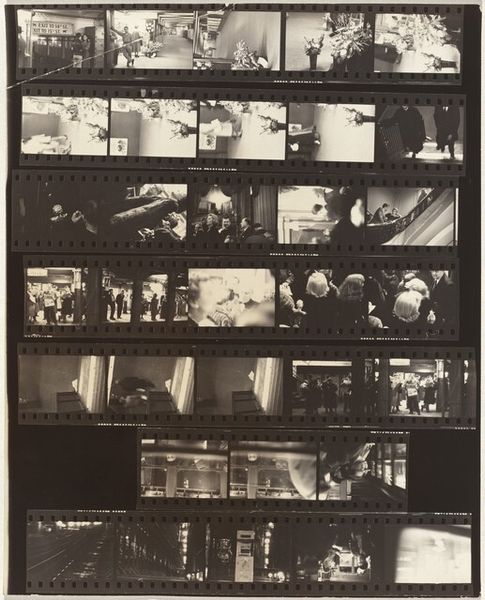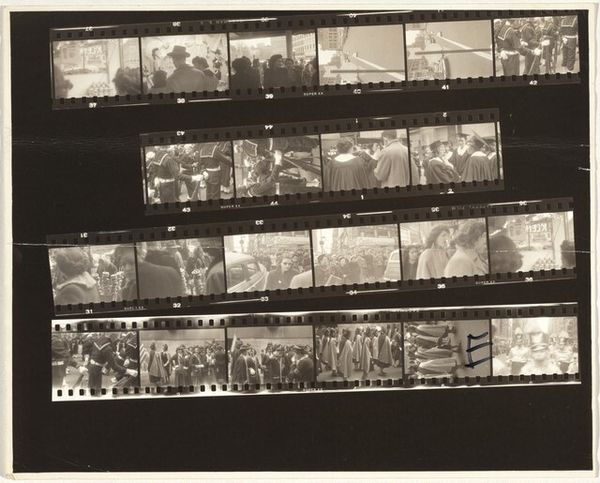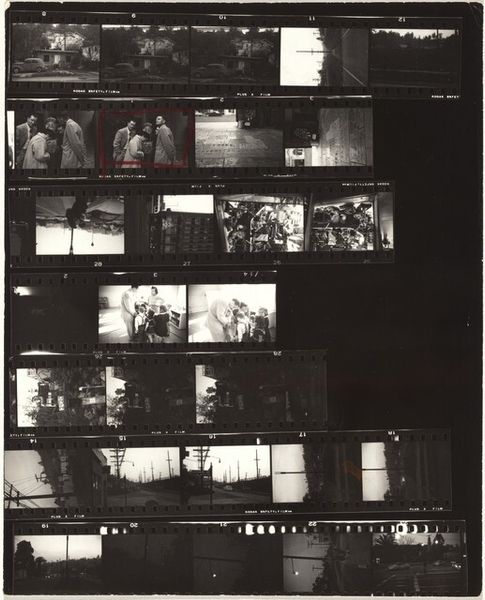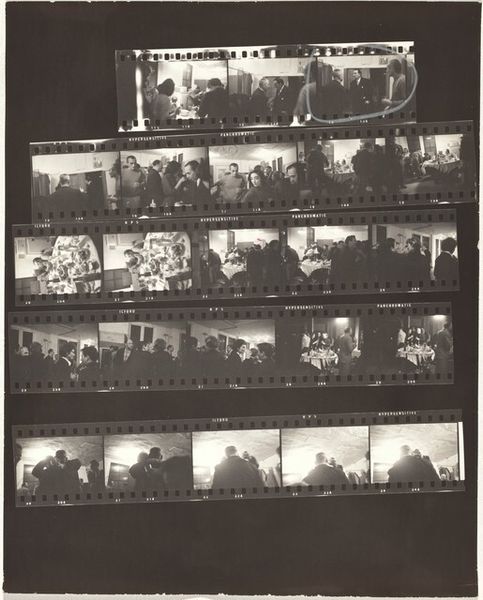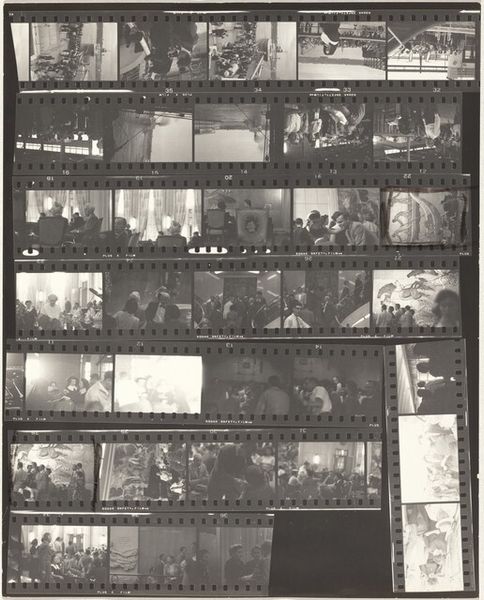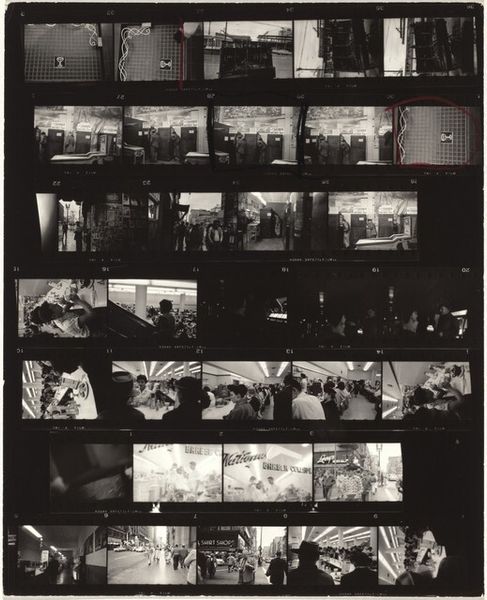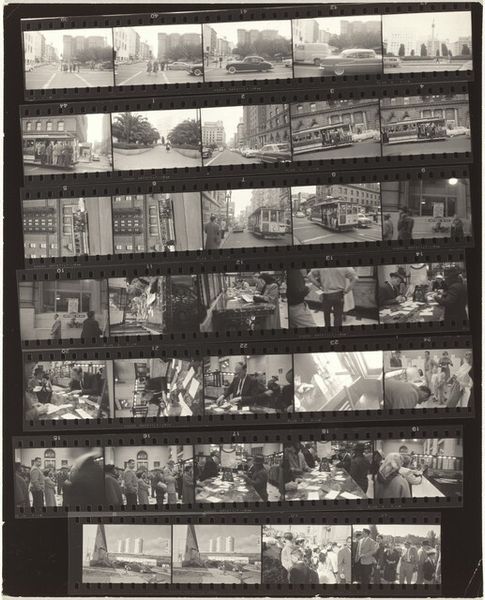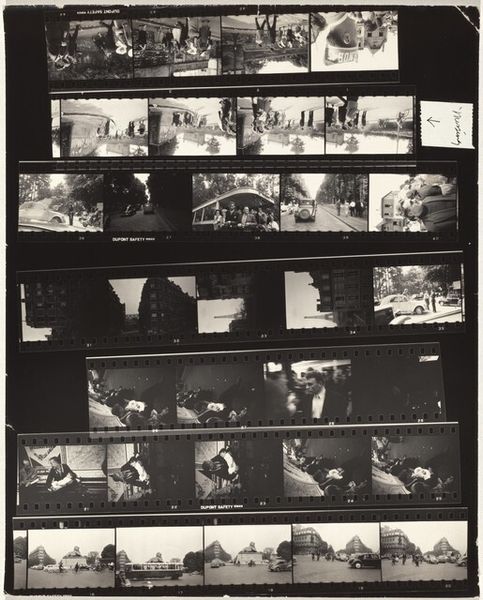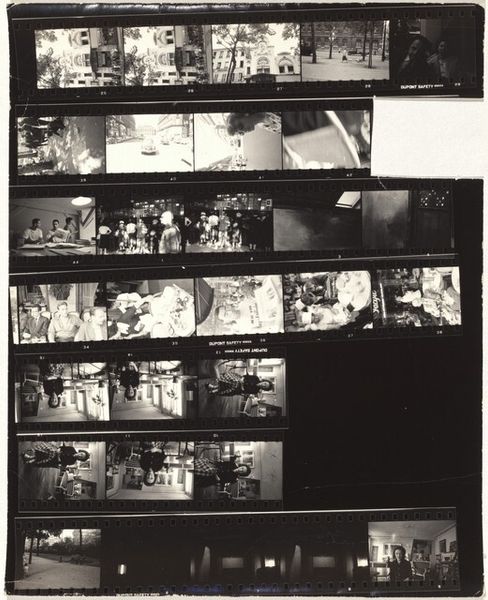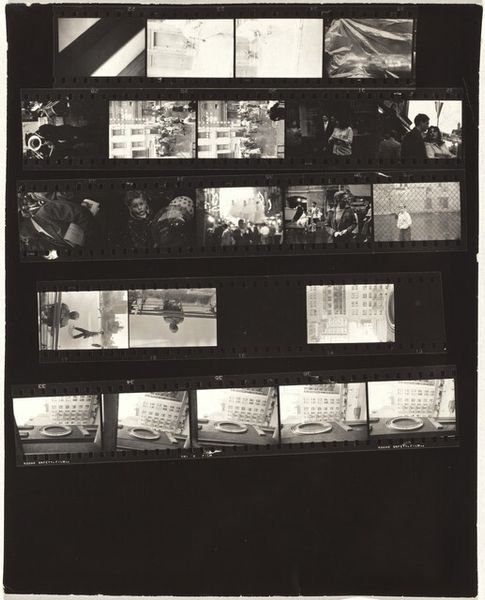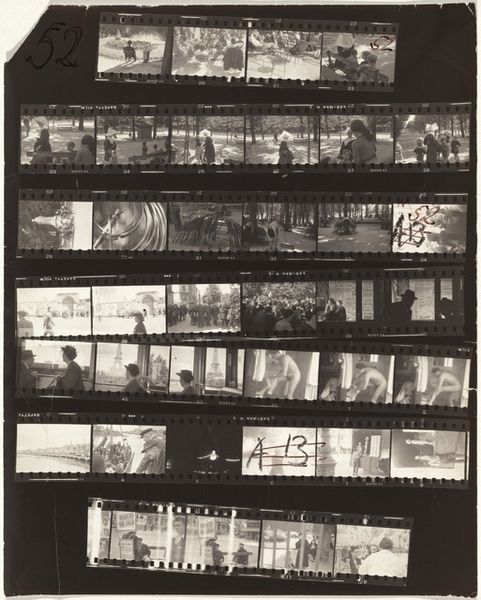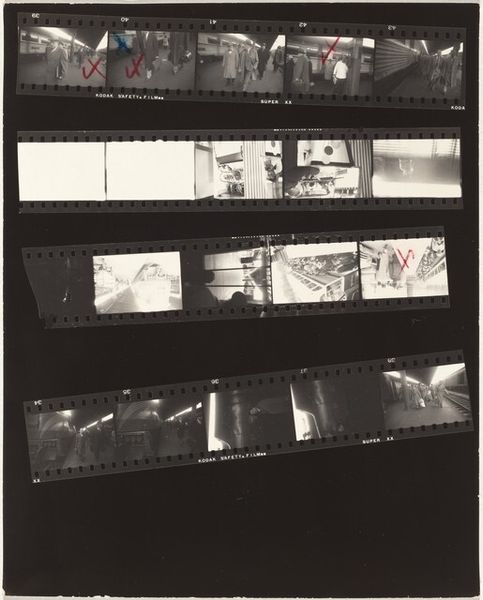
photography, gelatin-silver-print
#
portrait
#
film photography
#
narrative-art
#
street-photography
#
photography
#
gelatin-silver-print
#
monochrome photography
#
cityscape
#
modernism
#
monochrome
Dimensions: sheet: 25.2 x 20.2 cm (9 15/16 x 7 15/16 in.)
Copyright: National Gallery of Art: CC0 1.0
Curator: Robert Frank’s "New Year's Eve—New York City no number," made between 1957 and 1958, is a gelatin silver print showing several strips of film. It’s quite a different approach to photographic presentation. Editor: It strikes me as raw and a bit melancholy, actually. The gray tones and graininess add a layer of detachment, almost like a voyeuristic peek into someone else's fleeting moment. What intrigues me is the visual rhythm and the contrasts between the static street scenes and those more intimate close-ups below. Curator: Exactly, it's a conscious commentary on how photography mediates our experience of reality, the act of observing. We see the city—the built environment, the cars, the anonymous crowds gathering – all framed by the edges of the film itself, almost like strips of evidence. Frank wasn't interested in idealizing the American experience. His process became part of the message. Editor: You're right about the mediating effect. Look at how the composition draws the eye through these narrative fragments. The upper strips capture a sense of the urban environment, almost mechanical in repetition, until we land on these strangely arresting portraits. The materiality here is striking: the emulsion grain, the sprocket holes. It invites you to decode the American scene through a lens literally of production. Curator: Precisely! And that choice of presentation, this use of raw, unedited film strips, also blurs the lines between process and product. The photograph becomes an index not only of a moment in time but of the photographer's labor itself. Editor: I can certainly appreciate your attention to the socio-historical context of the photograph, but I'm interested also by its formal elements and Frank's strategic deployment of monotone. His compositional method offers more than merely representing the social and manufacturing structures. It provides something more subjective, a story informed by this very specific and original methodology. Curator: Perhaps in the end, that combination is exactly what makes Frank's work so enduring. He's not simply documenting. He is deconstructing and rebuilding the American experience through the gritty language of the street and, even more profoundly, through his distinctive labor and the materiality he harnessed. Editor: Indeed. This work reminds us that a photo’s visual impact comes not just from what's depicted, but also how it is visually manufactured and presented as a manufactured product with a new emotional life.
Comments
No comments
Be the first to comment and join the conversation on the ultimate creative platform.
